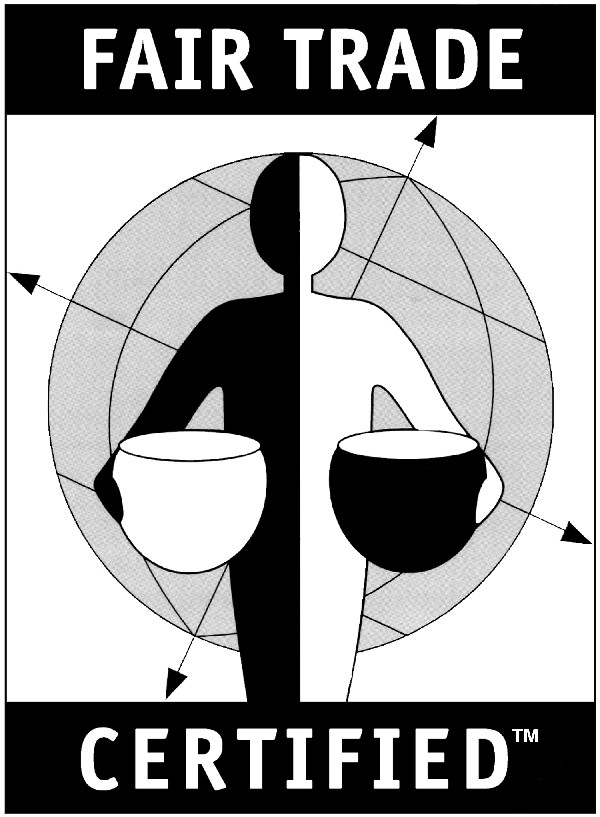Coffee-houses – The Internet In a Cup
Coffee fuelled the information exchanges of the 17th and 18th centuries Originally printed on Dec 18th 2003 in the Economist Magazine
WHERE do you go when you want to know the latest business news, follow commodity prices, keep up with political gossip, find out what others think of a new book, or stay abreast of the latest scientific and technological developments? Today, the answer is obvious: you log on to the internet. Three centuries ago, the answer was just as easy: you went to a coffee-house. There, for the price of a cup of coffee, you could read the latest pamphlets, catch up on news and gossip, attend scientific lectures, strike business deals, or chat with like-minded people about literature or politics.
The coffee-houses that sprang up across Europe, starting around 1650, functioned as information exchanges for writers, politicians, businessmen and scientists. Like today’s websites, weblogs and discussion boards, coffee-houses were lively and often unreliable sources of information that typically specialised in a particular topic or political viewpoint. They were outlets for a stream of newsletters, pamphlets, advertising free-sheets and broadsides. Depending on the interests of their customers, some coffee-houses displayed commodity prices, share prices and shipping lists, whereas others provided foreign newsletters filled with coffee-house gossip from abroad.
Rumours, news and gossip were also carried between coffee-houses by their patrons, and sometimes runners would flit from one coffee-house to another within a particular city to report major events such as the outbreak of a war or the death of a head of state. Coffee-houses were centres of scientific education, literary and philosophical speculation, commercial innovation and, sometimes, political fermentation. Collectively, Europe’s interconnected web of coffee-houses formed the internet of the Enlightenment era.
The great soberer
Coffee, the drink that fuelled this network, originated in the highlands of Ethiopia, where its beans were originally chewed rather than infused for their invigorating effects. It spread into the Islamic world during the 15th century, where it was embraced as an alternative to alcohol, which was forbidden (officially, at least) to Muslims. Coffee came to be regarded as the very antithesis of alcoholic drinks, sobering rather than intoxicating, stimulating mental activity and heightening perception rather than dulling the senses.
This reputation accompanied coffee as it spread into Western Europe during the 17th century, at first as a medicine, and then as a social drink in the Arab tradition. An anonymous poem published in London in 1674 denounced wine as the “sweet Poison of the Treacherous Grape” that drowns “our Reason and our Souls”. Beer was condemned as “Foggy Ale” that “besieg’d our Brains”. Coffee, however, was heralded as
…that Grave and Wholesome Liquor,
that heals the Stomach, makes the Genius quicker,
Relieves the Memory, revives the Sad,
and cheers the Spirits, without making Mad.
The contrast between coffee and alcoholic drinks was reflected in the decor of the coffee-houses that began to appear in European cities, London in particular. They were adorned with bookshelves, mirrors, gilt-framed pictures and good furniture, in contrast to the rowdiness, gloom and squalor of taverns. According to custom, social differences were left at the coffee-house door, the practice of drinking health’s was banned, and anyone who started a quarrel had to atone for it by buying an order of coffee for all present. In short, coffee-houses were calm, sober and well-ordered establishments that promoted polite conversation and discussion.
With a new rationalism abroad in the spheres of both philosophy and commerce, coffee was the ideal drink. Its popularity owed much to the growing middle class of information workers—clerks, merchants and businessmen—who did mental work in offices rather than performing physical labour in the open, and found that coffee sharpened their mental faculties. Such men were not rich enough to entertain lavishly at home, but could afford to spend a few pence a day on coffee. Coffee-houses provided a forum for education, debate and self-improvement. They were nicknamed “penny universities” in a contemporary English verse which observed: “So great a Universitie, I think there ne’er was any; In which you may a Scholar be, for spending of a Penny.”
“At the Café de Foy someone said that the king had taken a mistress…that she was a beautiful woman, the niece of the Duc de Noailles,” reads one report from the 1720’s.
As with modern websites, the coffee-houses you went to depended on your interests, for each coffee-house attracted a particular clientele, usually by virtue of its location. Though coffee-houses were also popular in Paris, Venice and Amsterdam, this characteristic was particularly notable in London, where 82 coffee-houses had been set up by 1663, and more than 500 by 1700. Coffee-houses around the Royal Exchange were frequented by businessmen; those around St James’s and Westminster by politicians; those near St Paul’s Cathedral by clergymen and theologians. Indeed, so closely were some coffee-houses associated with particular topics that the Tatler, a London newspaper founded in 1709, used the names of coffee-houses as subject headings for its articles. Its first issue declared:
All accounts of Gallantry, Pleasure, and Entertainment shall be under the Article of White’s Chocolate-house; Poetry, under that of Will’s Coffee-house; Learning, under…Grecian; Foreign and Domestick News, you will have from St James’s Coffee-house.
Richard Steele, the Tatler’s editor, gave its postal address as the Grecian coffee-house, which he used as his office. In the days before street numbering or regular postal services, it became a common practice to use a coffee-house as a mailing address. Regulars could pop in once or twice a day, hear the latest news, and check to see if any post awaited them. That said, most people frequented several coffee-houses, the choice of which reflected their range of interests. A merchant, for example, would generally oscillate between a financial coffee-house and one specialising in Baltic, West Indian or East Indian shipping. The wide-ranging interests of Robert Hooke, a scientist and polymath, were reflected in his visits to around 60 coffee-houses during the 1670s.
As the Tatler’s categorisation suggests, the coffee-house most closely associated with science was the Grecian, the preferred coffee-house of the members of the Royal Society, Britain’s pioneering scientific institution. On one occasion a group of scientists including Isaac Newton and Edmund Halley dissected a dolphin on the premises. Scientific lectures and experiments also took place in coffee-houses, such as the Marine, near St Paul’s, which were frequented by sailors and navigators. Seamen and merchants realised that science could contribute to improvements in navigation, and hence to commercial success, whereas the scientists were keen to show the practical value of their work. It was in coffee-houses that commerce and new technology first became intertwined.
The more literary-minded, meanwhile, congregated at Will’s coffee-house in Covent Garden, where for three decades the poet John Dryden and his circle reviewed and discussed the latest poems and plays. Samuel Pepys recorded in his diary on December 3rd 1663 that he had looked in at Will’s and seen Dryden and “all the wits of the town” engaged in “very witty and pleasant discourse”. After Dryden’s death many of the literatured shifted to Button’s, which was frequented by Alexander Pope and Jonathan Swift, among others. Pope’s poem “The Rape of the Lock” was based on coffee-house gossip, and discussions in coffee-houses inspired a new, more colloquial and less ponderous prose style, conversational in tone and clearly visible in the journalism of the day.
It was in coffee-houses that commerce and new technology first became intertwined
Other coffee-houses were hotbeds of financial innovation and experimentation, producing new business models in the form of innumerable novel variations on insurance, lottery or joint-stock schemes. The best-known example was the coffee-house opened in the late 1680s by Edward Lloyd. It became a meeting-place for ships’ captains, ship owners and merchants, who went to hear the latest maritime news and to attend auctions of ships and their cargoes. Lloyd began to collect and summarise this information, supplemented with reports from a network of foreign correspondents, in the form of a regular newsletter, at first handwritten and later printed and sent to subscribers. Lloyd’s thus became the natural meeting place for ship owners and the underwriters who insured their ships. Some underwriters began to rent booths at Lloyd’s, and in 1771 a group of 79 of them collectively established the Society of Lloyd’s, better known as Lloyd’s of London.
Similarly, two coffee-houses near London’s Royal Exchange, Jonathan’s and Garraway’s, were frequented by stockbrokers and jobbers. Attempts to regulate the membership of Jonathan’s, by charging an annual subscription and barring non-members were successfully blocked by traders who opposed such exclusivity. So in 1773 a group of traders from Jonathan’s broke away and decamped to a new building, the forerunner of the London Stock Exchange. Garraway’s was a less reputable coffee-house, home to auctions of all kinds and much dodgy dealing, particularly during the South Sea Bubble of 1719-21. It was said of Garraway’s that no other establishment “fostered so great a quantity of dishonoured paper”.
Far more controversial than the coffee-houses’ functions as centres of scientific, literary and business exchange, however, was their potential as centres of political dissent. Coffee’s reputation as a seditious beverage goes back at least as far as 1511, the date of the first known attempt to ban the consumption of coffee, in Mecca. Thereafter, many attempts were made to prohibit coffee and coffee-houses in the Muslim world. Some claimed it was intoxicating and therefore subject to the same religious prohibition as alcohol. Others claimed it was harmful to the health. But the real problem was the coffee-houses’ alarming potential for facilitating political discussion and activity.
This was the objection raised in a proclamation by Charles II of England in 1675. Coffee-houses, it declared, had produced very evil and dangerous effects…for that in such Houses…divers False, Malitious and Scandalous Reports are devised and spread abroad, to the Defamation of His Majestie’s Government, and to the Disturbance of the Peace and Quiet of the Realm.
The result was a public outcry, for coffee-houses had become central to commercial and political life. When it became clear that the proclamation would be widely ignored and the government’s authority thus undermined, a further proclamation was issued, announcing that coffee-sellers would be allowed to stay in business for six months if they paid £500 and agreed to swear an oath of allegiance. But the fee and time limit were soon dropped in favour of vague demands that coffee-houses should refuse entry to spies and mischief-makers.
Dark rumours of plots and counter-plots swirled in London’s coffee-houses, but they were also centres of informed political debate. Swift remarked that he was “not yet convinced that any Access to men in Power gives a man more Truth or Light than the Politicks of a Coffee House.” Miles’s coffee-house was the meeting-place of a discussion group, founded in 1659 and known as the Amateur Parliament. Pepys observed that its debates were “the most ingeniose, and smart, that I ever heard, or expect to heare, and bandied with great eagernesse; the arguments in the Parliament howse were but flatte to it.” After debates, he noted, the group would hold a vote using a “wooden oracle”, or ballot-box—a novelty at the time.
Sweet smell of sedition
The contrast with France was striking. One French visitor to London, the Abbé Prévost, declared that coffee-houses, “where you have the right to read all the papers for and against the government”, were the “seats of English liberty”. Coffee-houses were popular in Paris, where 380 had been established by 1720. As in London, they were associated with particular topics or lines of business. But with strict curbs on press freedom and a bureaucratic system of state censorship, France had far fewer sources of news than did England, Holland or Germany. This led to the emergence of handwritten newsletters of Paris gossip, transcribed by dozens of copyists and sent by post to subscribers in Paris and beyond. The lack of a free press also meant that poems and songs passed around on scraps of paper, along with coffee-house gossip, were important sources of news for many Parisians.
Little wonder then that coffee-houses, like other public places in Paris, were stuffed with government spies. Anyone who spoke out against the state risked being hauled off to the Bastille, whose archives contain reports of hundreds of coffee-house conversations, noted down by informers. “At the Café de Foy someone said that the king had taken a mistress, that she was named Gontaut, and that she was a beautiful woman, the niece of the Duc de Noailles,” runs one report from the 1720s. Another, from 1749, reads, “Jean-Louis Le Clerc made the following remarks in the Café de Procope: that there never has been a worse king; that the court and the ministers make the king do shameful things, which utterly disgust his people.”
Those “who assembled day after day in the Café de Procope saw, with penetrating glance, in the depths of their black drink, the illumination of the year of the revolution”
Despite their reputation as breeding-grounds for discontent, coffee-houses seem to have been tolerated by the French government as a means of keeping track of public opinion. Yet it was at the Café de Foy, eyed by police spies while standing on a table brandishing two pistols, that Camille Desmoulins roused his countrymen with his historic appeal—“Aux armes, citoyens!” – on July 12th 1789. The Bastille fell two days later, and the French revolution had begun. Jules Michelet, a French historian, subsequently noted that those “who assembled day after day in the Café de Procope saw, with penetrating glance, in the depths of their black drink, the illumination of the year of the revolution.”
Can the coffee-houses’ modern equivalent, the internet, claim to have had such an impact? Perhaps not. But the parallels are certainly striking. Originally the province of scientists, the internet has since grown to become a nexus of commercial, journalistic and political interchange.
In discussion groups and chat rooms, gossip passes freely—a little too freely, think some regulators and governments, which have tried and generally failed to rein them in. Snippets of political news are rounded up and analysed in weblogs, those modern equivalents of pamphlets and broadsides. Obscure scientific and medical papers, once available only to specialists, are just clicks away; many scientists explain their work, both to their colleagues and to the public at large, on web pages. Countless new companies and business models have emerged, not many of them successful, though one or two have become household names. Online exchanges and auction houses, from eBay to industry-specific marketplaces, match buyers and sellers of components, commodities and household bric-à-brac.
Coffee, meet Wi-Fi
The kinship between coffee-houses and the internet has recently been underlined by the establishment of wireless “hotspots” which provide internet access, using a technology called Wi-Fi, in modern-day coffee-shops. T-Mobile, a wireless network operator, has installed hotspots in thousands of Starbucks coffee-shops across America and Europe. Coffee-shop Wi-Fi is particularly popular in Seattle—home to both Starbucks and such leading internet firms as Amazon and Microsoft.
Such hotspots allow laptop-toting customers to check their e-mail and read the news as they sip their lattes. But history provides a cautionary tale for those hotspot operators that charge for access. Coffee-houses used to charge for coffee, but gave away access to reading materials. Many coffee-shops are now following the same model, which could undermine the prospects for fee-based hotspots. Information, both in the 17th century and today, wants to be free—and coffee-drinking customers, it seems, expect it to be.







